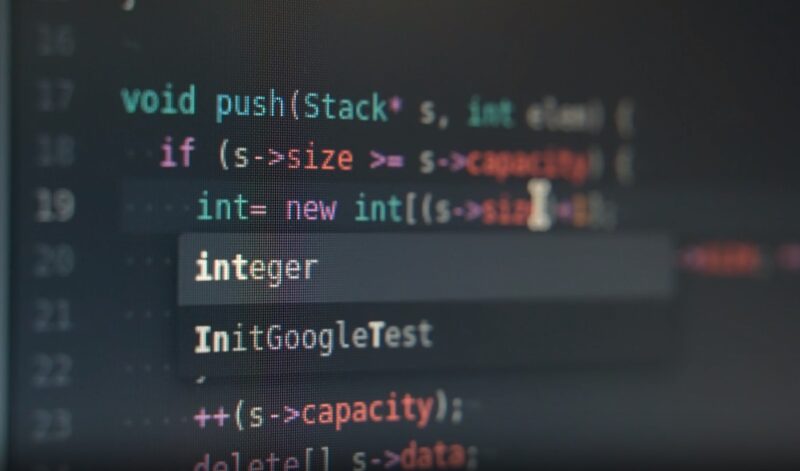Navigating the digital realm is much like building a house. Just as the latter requires a solid foundation, the right materials, and skilled craftsmanship, developing a digital product demands a carefully chosen combination of software products and programming languages.
This combination, aptly called a “technology stack,” is the backbone of our digital experiences. Let’s embark on a journey to understand this concept better.
The Basics
The term “technology stack” sounds technical, but at its heart, it’s all about combining the right tools to create something meaningful.
What Constitutes a Stack?
A technology stack, often simply called a “tech stack,” is a combination of software applications, frameworks, and programming languages used to create a web or mobile application. Think of it as the collection of tools developers use to bring an idea to life.
- Software Applications: These are programs we run on our devices. For web development, this can include web servers or database management systems.
- Frameworks: These are like ready-made kits for developers. Instead of starting from scratch, a framework provides a basic structure upon which developers can build and customize. Examples include React for frontend development or Django for the backend.
- Programming Languages: The foundational element of every tech stack. It’s the language developers use to instruct computers, such as Python, JavaScript, or Ruby.
Importance in the Digital World
In an increasingly digital world, the tech stack a company chooses can greatly influence its success. The right stack ensures optimal performance, scalability, and maintainability of an application.
- Performance: A suitable stack ensures your app runs smoothly, offering users a seamless experience.
- Scalability: As your user base grows, your app should too. The right tech stack allows for expansion without major overhauls.
- Maintainability: Updates, bug fixes, and improvements are a part of the digital product lifecycle. A good tech stack makes this process smoother.
Common Components

Every digital product, be it an intricate website or a simple mobile app, has both a visible and an invisible side. And so does a tech stack.
The Frontend
The frontend, often dubbed the “client-side”, is everything users interact with directly. It’s the look and feel of a website or app.
- Languages: HTML, CSS, and JavaScript are the holy trinity of frontend development. They shape the structure, style, and interactivity of a site, respectively.
- Frameworks and Libraries: These aid developers in crafting responsive and interactive UIs. Examples are React, Angular, and Vue.js.
The Backend
Behind every engaging frontend lies a robust backend, which is essentially the brain of an application, handling data storage, user authentication, and business logic.
- Languages: Backend, or “server-side,” languages include Python, Ruby, PHP, and Node.js.
- Frameworks: These facilitate quicker backend development. Popular ones include Django (Python), Ruby on Rails (Ruby), and Express (Node.js).
Choosing the Right Stack for Your Project

Akin to choosing the right materials for building a house, selecting an appropriate tech stack can make or break your digital project.
Factors to Consider
There isn’t a one-size-fits-all answer when it comes to tech stacks. However, some universal factors can guide your decision:
- Project Size: Small projects might just need a simple stack, while complex ones could require a full suite of tools.
- Scalability Needs: If rapid growth is anticipated, choose a stack known for scalability.
- Developer Expertise: Align the stack with the strengths and knowledge of your development team.
Popular Tech Stacks in 2023
The digital realm is ever-evolving, and so are tech stacks. As of 2023, here are some of the most popular ones:
- MERN: MongoDB, Express.js, React, and Node.js. A full JavaScript stack.
- MEAN: MongoDB, Express.js, Angular, and Node.js. Another JS favorite.
- LAMP: Linux, Apache, MySQL, and PHP. A classic that remains widely used.
Specialized Tech Stacks

Beyond general application development, there are specialized arenas within the tech world. These specialized fields often demand unique tech stacks tailored to their specific requirements.
Mobile Development
Mobile apps are ubiquitous, making mobile development stacks crucial in today’s tech landscape.
- Native Development: Apps built specifically for a platform (iOS or Android) use native development stacks. For iOS, this involves the Swift or Objective-C languages and the iOS SDK. For Android, it’s Kotlin or Java and the Android SDK.
- Cross-platform Development: Tools like Flutter, React Native, and Xamarin allow developers to write code once and deploy it across both iOS and Android.
Game Development
Gaming is a multi-billion-dollar industry, and the tech stacks behind them are just as complex and fascinating.
- Engines: Game engines like Unity, Unreal Engine, and Godot offer a foundation upon which games are built.
- Languages: While C++ remains a dominant language in game development, languages like C# (primarily with Unity) and Python also have their space in the realm.
AI and Machine Learning
Artificial Intelligence and Machine Learning have revolutionized many sectors, and their tech stacks are a blend of classic and avant-garde tools.
- Languages: Python dominates this field due to its simplicity and the availability of extensive libraries.
- Frameworks and Libraries: TensorFlow, PyTorch, and Scikit-learn are some of the leading tools that empower AI developers.
The Evolving Nature of Tech Stacks
Technology is dynamic, and what’s in vogue today might be obsolete tomorrow. This ever-changing nature is reflected in the evolution of tech stacks.
The Rise and Fall
Just like empires, certain tech stacks rise to prominence and then gradually fade away, either replaced by better alternatives or rendered obsolete by new technological advancements.
- Past Dominance: Remember the Flash-based websites of the early 2000s? Adobe Flash was once a giant in the web development space but is now practically extinct.
- Current Favorites: As mentioned earlier, the MERN and MEAN stacks are among the darlings of the development world in 2023. However, there’s no telling what the next big thing will be.
Staying Updated: A Developer’s Challenge
One of the most exciting yet challenging aspects of being a developer is the need to stay updated. With tech stacks evolving rapidly, continuous learning is paramount.
- Resources: Websites like Stack Overflow, GitHub, and various tech blogs provide insights into emerging trends.
- Community: Engaging with the developer community, attending conferences, and participating in webinars can also help professionals stay abreast of the latest in tech stacks.
FAQs
How do databases fit into the tech stack paradigm?
Databases are a fundamental part of the backend component of a tech stack. They handle the persistent storage of data, ensuring that user information, application states, and other crucial data are stored and retrieved efficiently. Examples include SQL databases like PostgreSQL or MySQL and NoSQL databases like MongoDB or Cassandra.
Are tech stacks only relevant for web and app development?
No, while they are often discussed in the context of web and app development, they’re relevant wherever a combination of tools, languages, and frameworks are used. This includes areas like embedded systems, robotics, desktop software development, and more.
How often should a company revisit or reevaluate its tech stack?
Companies should routinely reevaluate them, especially during product upgrade cycles or when planning to scale. Additionally, a review is advisable when there’s a significant technological advancement or when the current stack no longer meets performance or security standards.
Is it possible to mix and match components from different popular tech stacks?
Absolutely! While there are popular combinations like MERN or LAMP, developers often tailor stacks to fit specific project needs. The key is to ensure compatibility and efficiency between chosen components.
Can the wrong tech stack choice lead to project failure?
Yes, an ill-suited tech stack can lead to various issues like poor performance, scalability challenges, increased costs, and longer development times. While it may not guarantee project failure, it can significantly impede its success.
How do cloud services like AWS, Azure, or Google Cloud fit into tech stacks?
Cloud services play a pivotal role in modern tech stacks. They provide infrastructure, platform, and software solutions. For instance, a company might use AWS for its server infrastructure, leverage its database solutions, and even utilize its AI or machine learning tools, integrating them all into their unique tech stack.
Final Words
Just as architects need the right materials to construct a building, developers need the right tech stack to create a digital product. By understanding the components of a tech stack and considering the specific needs of a project, you can lay a strong foundation for your digital endeavors.
We’ve recently discussed the reasons why your internet might be disconnecting, so make sure to check out our article and perform troubleshooting hassle-free!







